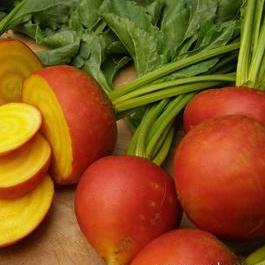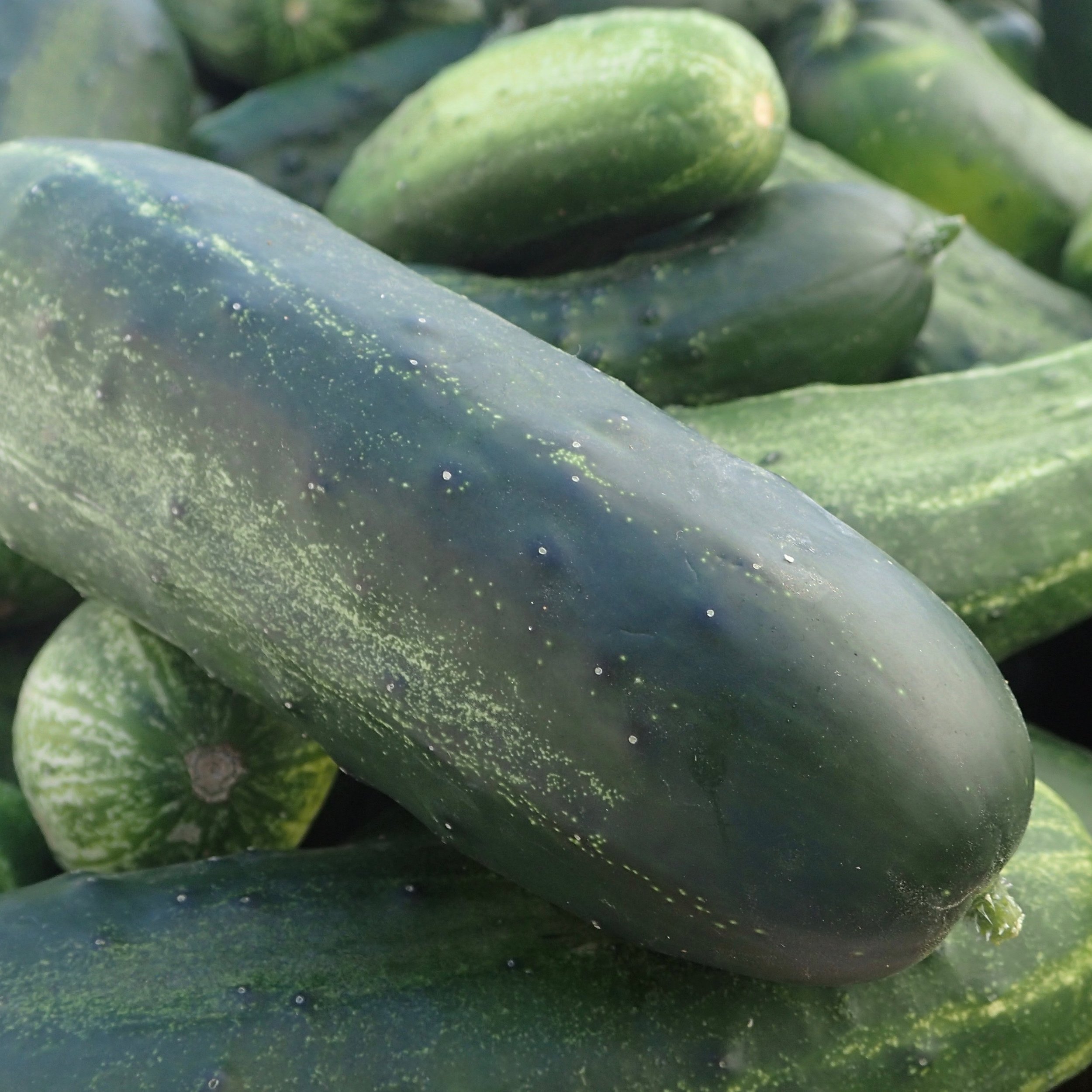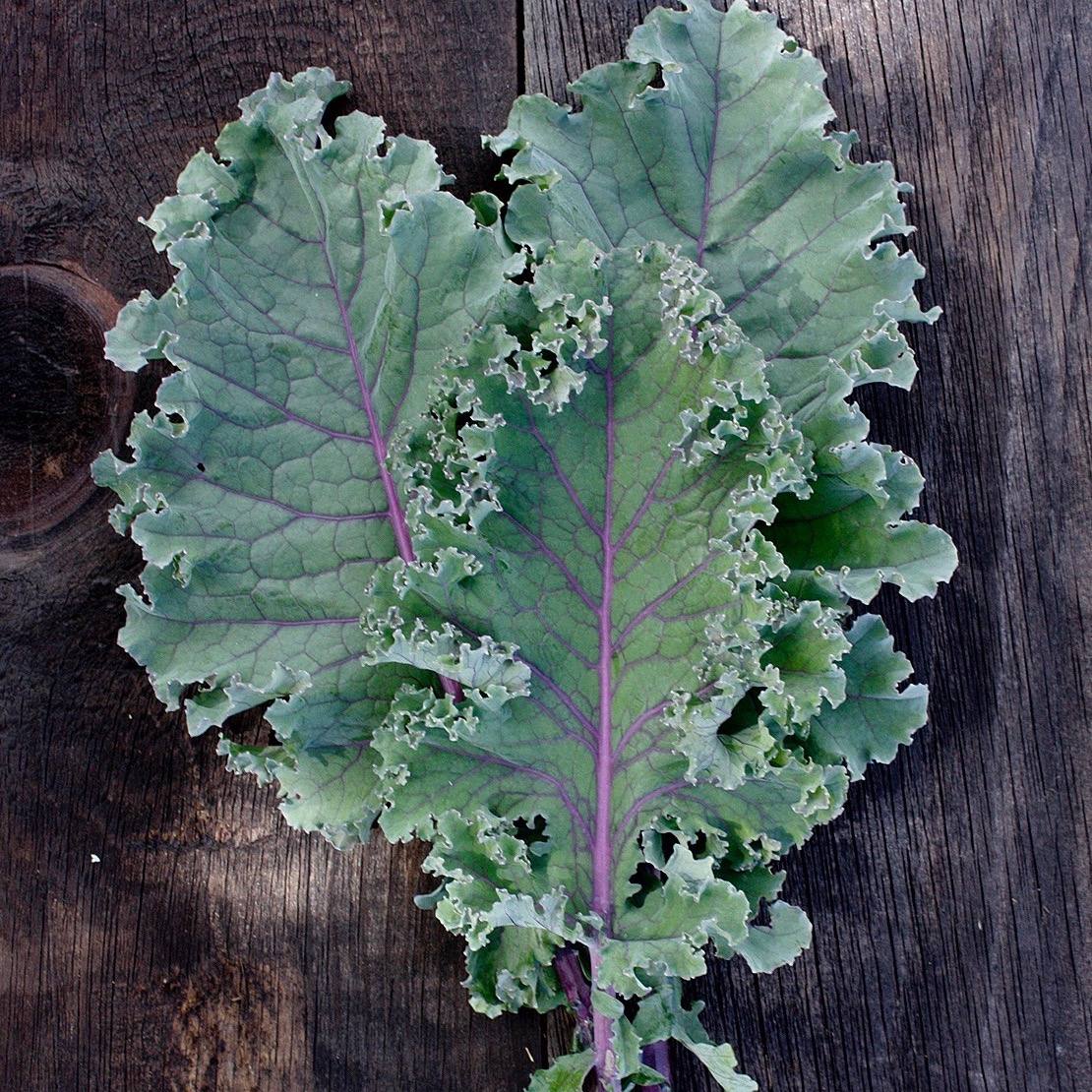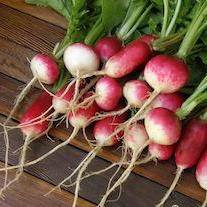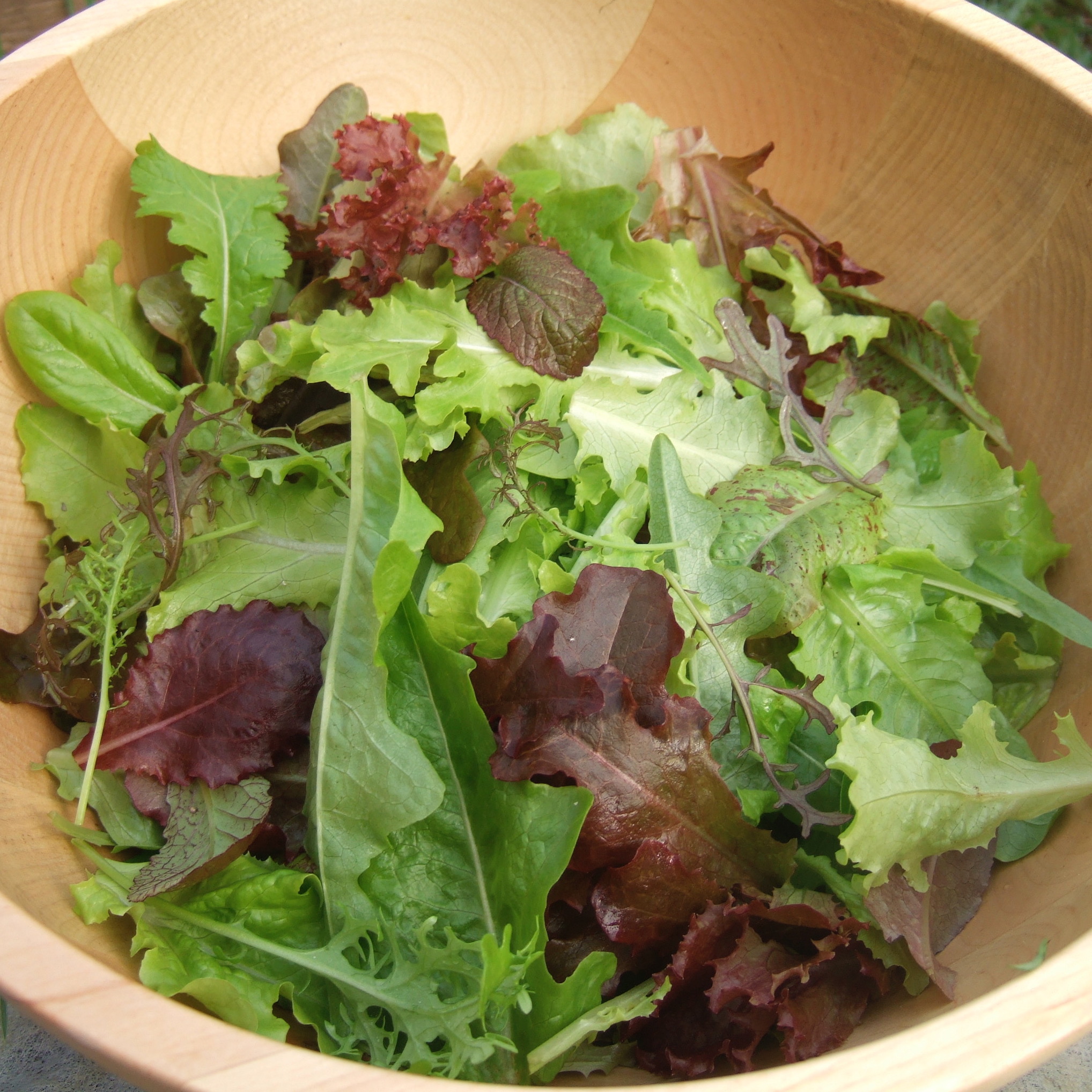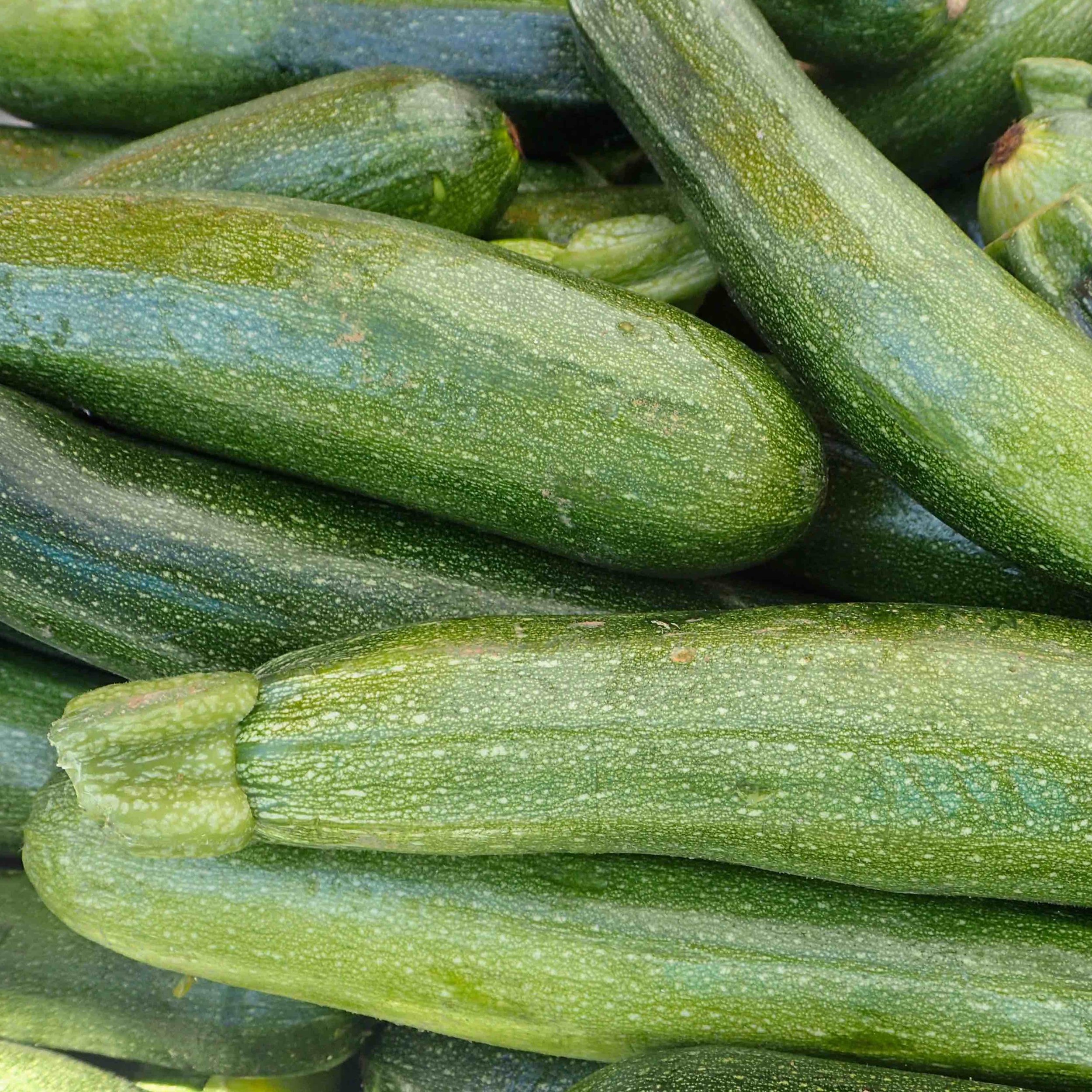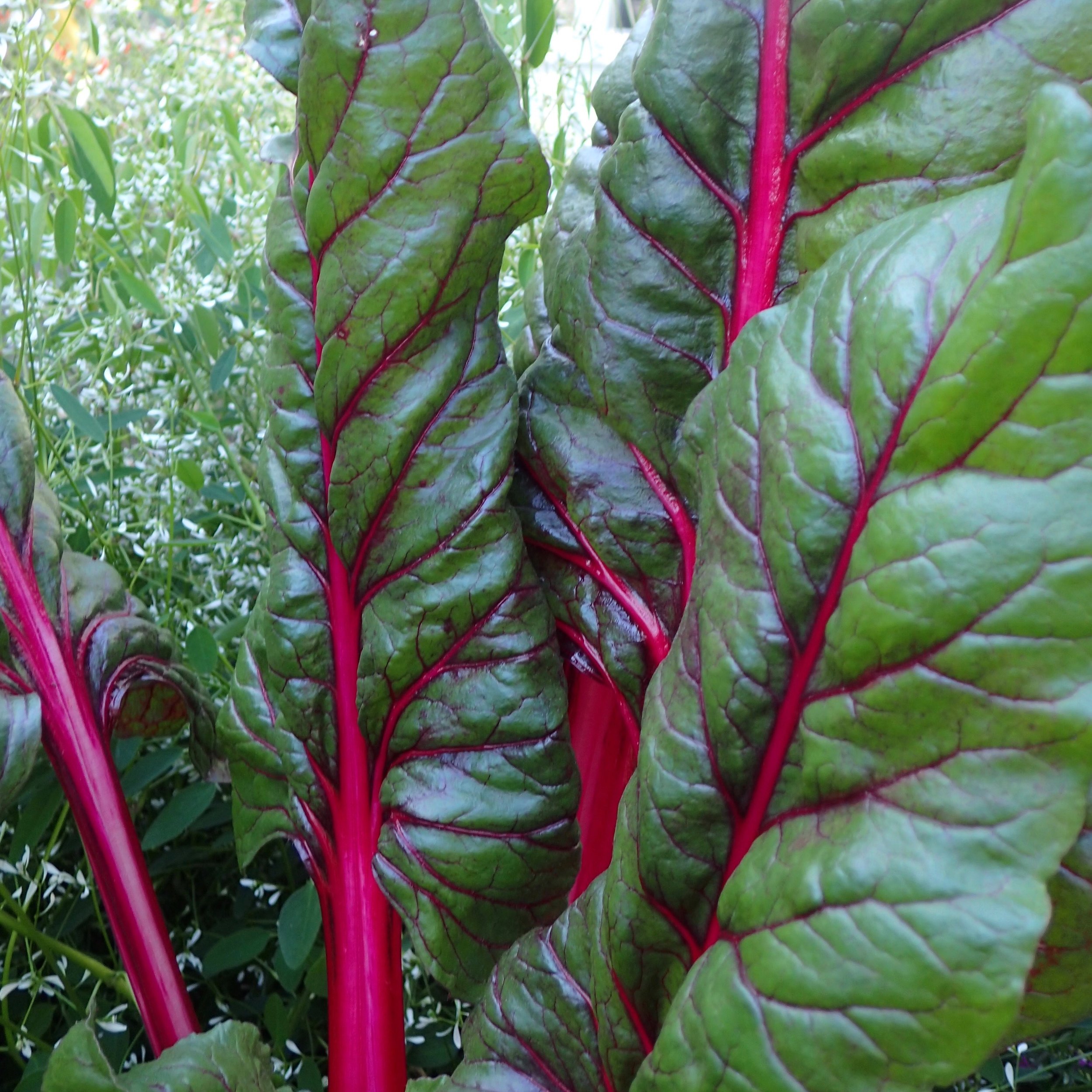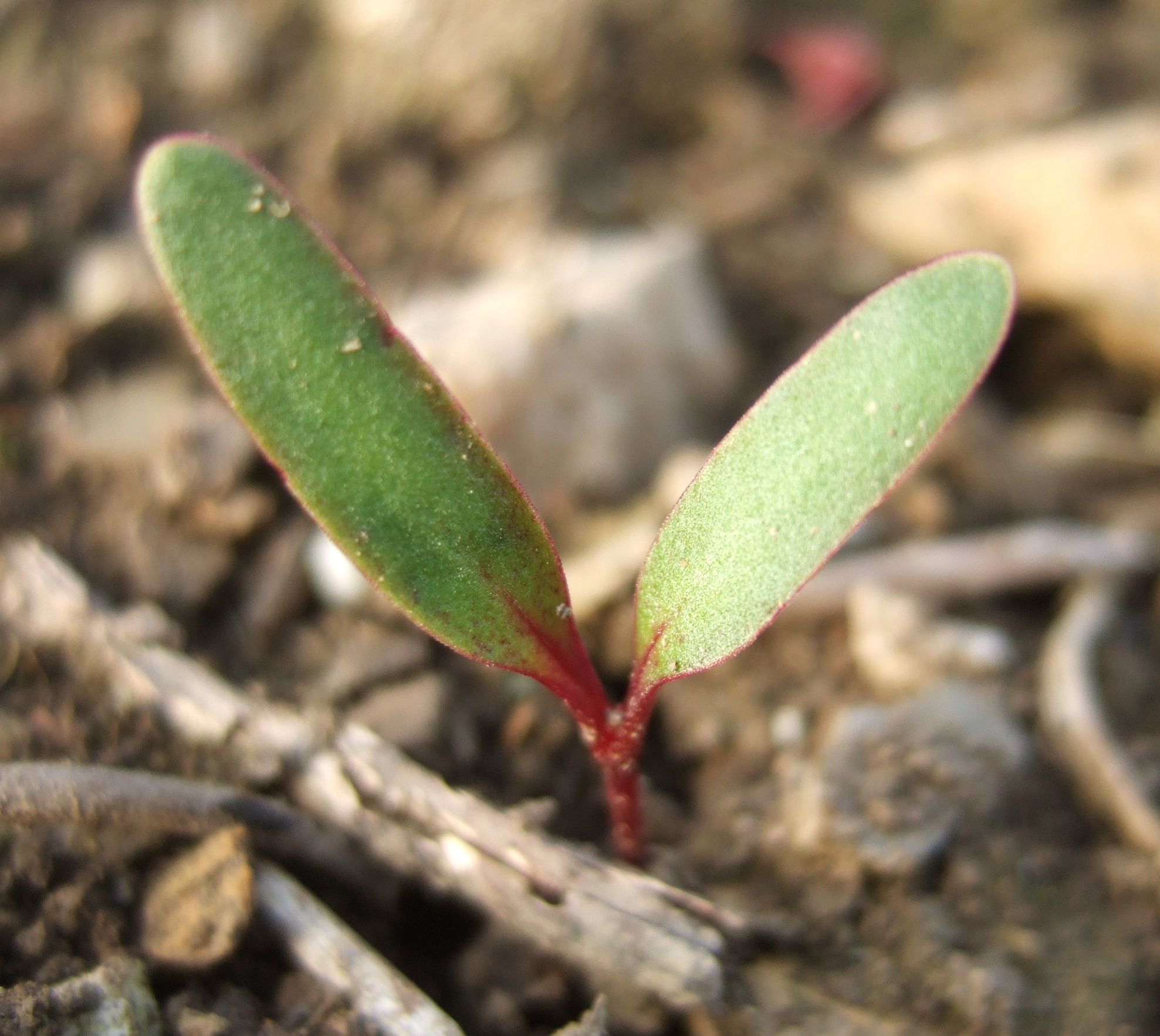Easy From Seed Vegetables
Beans, Beets, Cucumbers, Kale, Peas, Radishes, Salad Greens, Squash, Swiss Chard
Most of the vegetables typically grown in a home garden can be sown directly in the garden soil. These include salad greens of all kinds—lettuces, mizuna, arugula, spinach, and mustards—as well as beans and peas, root vegetables, summer and winter squash, and cool season cooked greens like kale and chard.
First, prepare the garden bed, loosening the soil and incorporating plenty of compost. Then, simply follow the guidelines below. In just weeks, your bountiful, delectable summer harvest will begin!
Left to right: Bean seedling, lettuce seedlings, chard seedling
Beans may be pole beans, or they may have a bush habit. In either case, wait until nighttime temps stay consistently above 50ºF to sow. For bush beans, poke seeds into the soil about an inch deep and 4 inches apart in rows that are about 1½ feet apart. Two sowings, about 3 weeks apart, will extend the harvest. For pole beans, be sure set up the trellis prior to planting time.
Beet seeds are actually clusters of seeds. Once danger of frost has passed plant them about an inch apart and ½ inch deep—and don’t be surprised if clumps of seedlings emerge. Thin them to about 2 inches apart when they are an inch or two tall, and again as the plants develop. When plants are 3 inches apart and plump enough for your purposes, you can harvest some at the baby stage, allowing others to enlarge.
Cucumbers will be set back by cold nights, so wait until nighttime temps stay above 50ºF. Sow 5 or 6 seeds, covered by an inch of soil, in a low mound, and thin to the 3 best plants as they start to develop. In a small garden, you can grow cucumbers up a trellis or fence.
Kale seeds can be sown in early spring, about 2 inches apart and ½ inch deep. Thin plants to about 12 inches apart when they are 3 to 4 inches tall, using the thinnings in salads. Begin harvesting outside leaves when plants have at least 6 sets of leaves. A second kale sowing in late summer will provide greens into the winter.
Peas, especially edible-podded peas, are a productive spring crop. They require some support, so plant seeds next to a fence or erect a structure to support them before planting. Sow seeds an inch deep and 2 to 3 inches apart in early spring. Generally, no thinning is needed.
Radish seeds can be sown in early spring, spaced 1 inch apart and covered with ½ inch of soil. Thin them early to 2 inches apart to give them room to develop. Rather than planting a big row, sow small amounts a week apart for a continuous harvest.
Salad Greens, planted thickly in wide rows, can be harvested two or even three times. Make successive small sowings until the weather turns hot for a steady supply of baby greens. Beginning in early spring, broadcast the seeds so that they fall about an inch apart and cover with ¼ inch of soil. Firm gently and keep the bed evenly moist. Harvest with scissors when they are 4 to 5 inches tall, and allow the plants to regrow.
Squash will be set back by cold nights, so wait to plant until nighttime temps stay above 50ºF. Sow 4 or 5 seeds in a low mound, covered by an inch of soil, and thin to the 2 best plants as they start to develop. Summer squash, such as zucchini or patty pan, are tender and tasty when harvested young, no larger than 6 inches. If you have the space, you can also plant summer and winter squashes in staggered rows.
Swiss Chard seeds, like beets, are clustered seeds. Sow them ½ inch deep and 2 inches apart once danger of frost has passed. Thin the seedlings when they develop two sets of leaves and add the thinnings to salads. Final spacing should be 12 to 15 inches apart.


